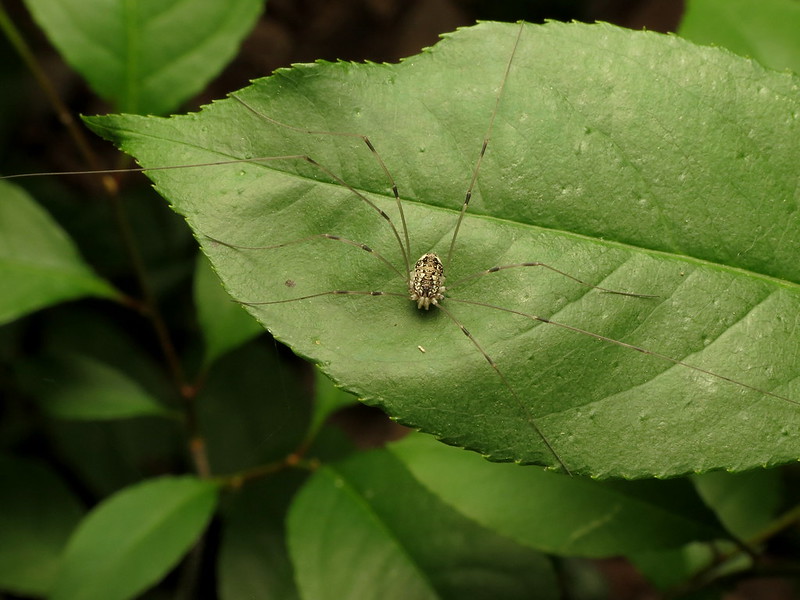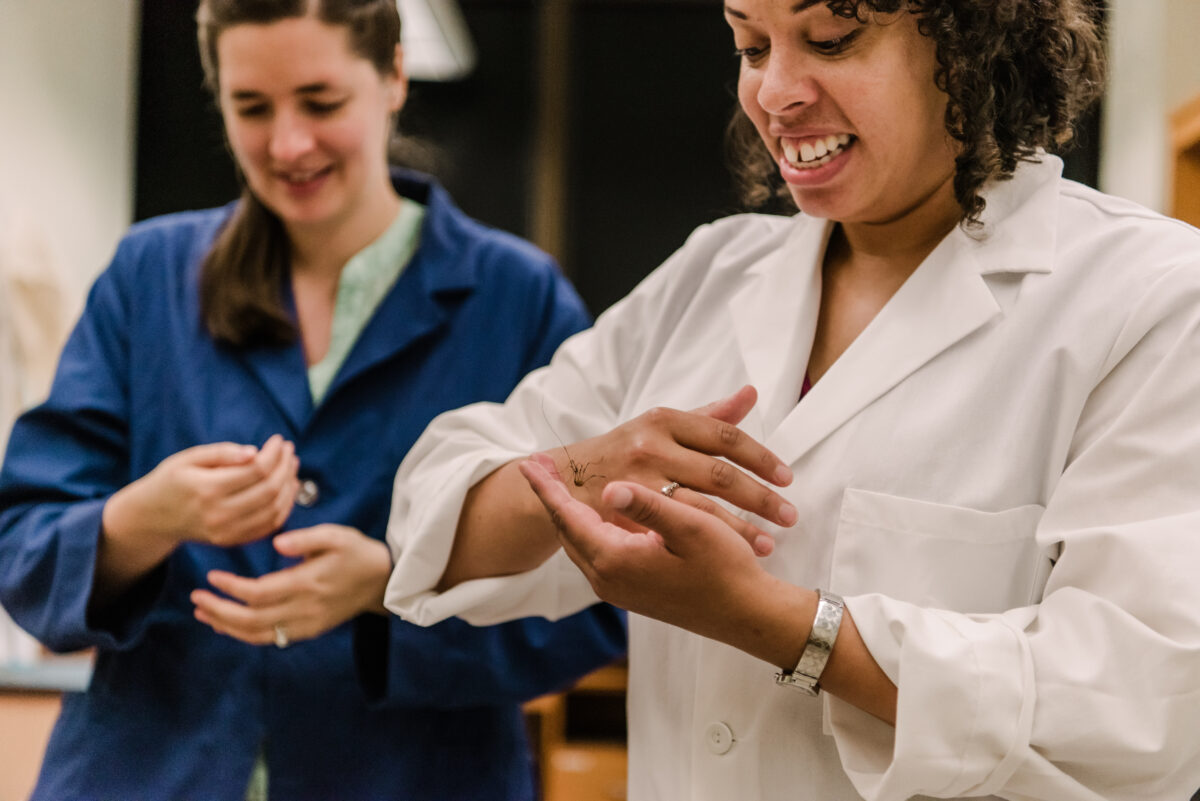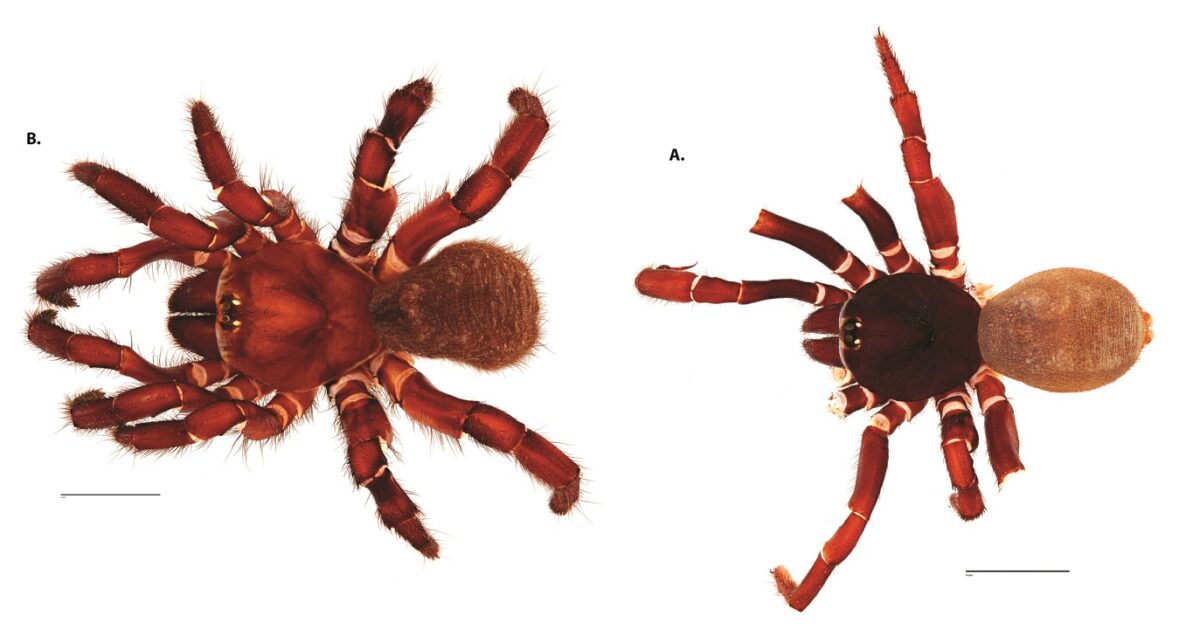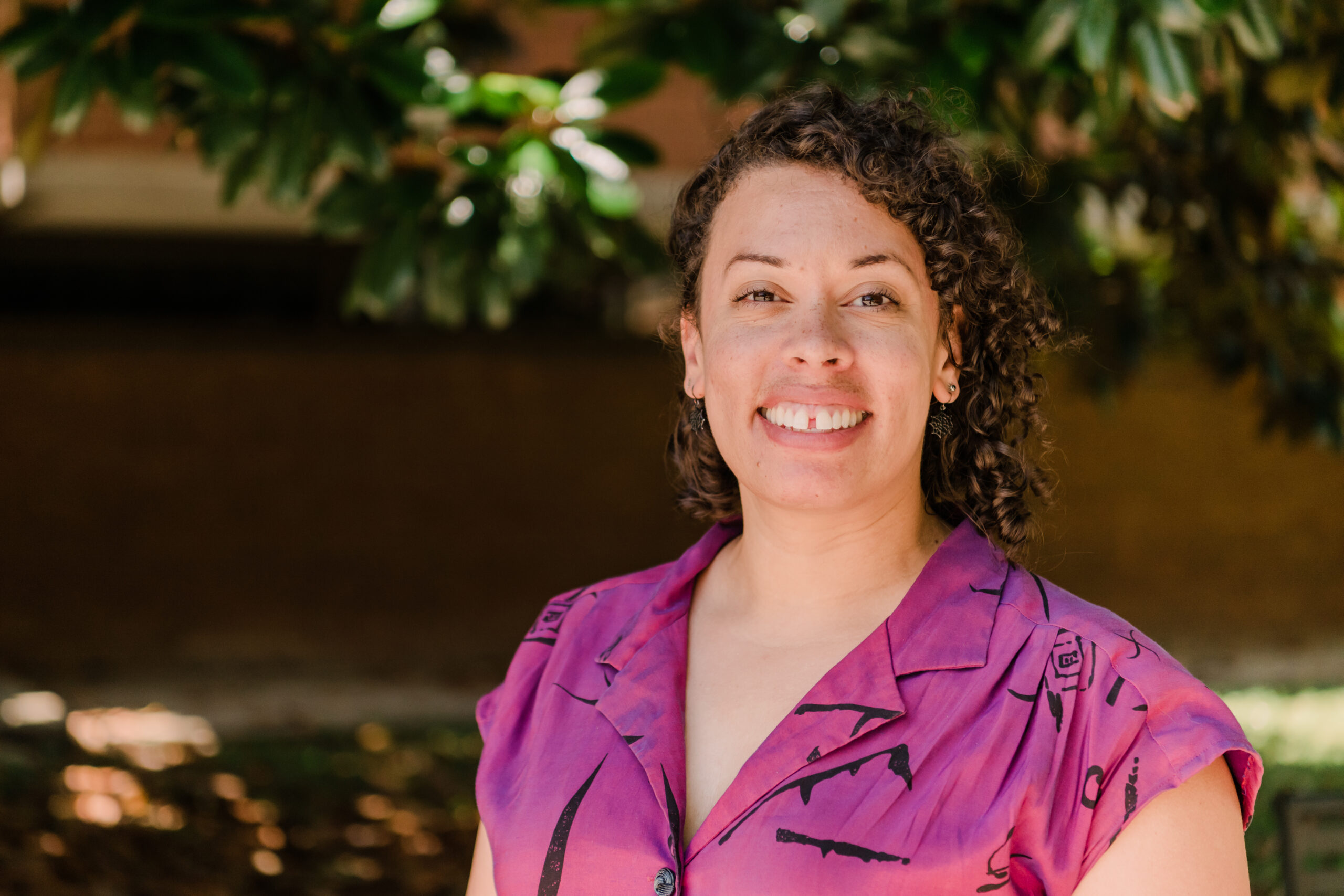Mammals are “all-in” on sexual reproduction, explains Mercedes Burns, assistant professor of biological sciences at UMBC. They even have “mechanisms that reinforce the maintenance of sex and make it so that asexual reproduction”—that is, without a mate—“isn’t possible anymore,” she adds. But why?
Even beyond mammals, most vertebrates require a mate to reproduce, but some organisms can reproduce on their own. Both modes of reproduction are relatively common throughout the tree of life. However, animals that are able to switch between the two modes of reproduction are incredibly rare, Burns says.
One example is an organism Burns studies—a member of a group of arachnids known as harvestmen, or more popularly as daddy-longlegs. The species Burns studies only exists on the two northernmost islands of Japan. Through a $987,000 grant from the National Science Foundation, she’ll soon travel there with a group of students to learn more about them.
“The questions I’m asking in this CAREER grant set the stage,” she says, for discovering how species that can reproduce both sexually (with a mate) and asexually (without a mate) “control whether it’s going to be one reproductive mode or the other,” Burns says. “Ultimately we want to understand what allows for this kind of reproductive strategy in these systems, which we don’t see commonly in animals.”

Different environments, different strategies
The NSF CAREER Award recognizes early-career faculty researchers who “have the potential to serve as academic role models in research and education and lead advances in the mission of their department or organization.” The award supports five years of work on a major research project.
Sexual coercion and harassment are widespread across the animal kingdom. Burns’s project will investigate how these kinds of sexual conflict may drive whether females in the species she is studying reproduce sexually or asexually in different situations. She has already found that populations in prime habitats tend to be dense and consist of a nearly equal number of males and females. However, in more remote, lower quality habitats, the populations are nearly exclusively female.
“We think that over evolutionary time, females are perhaps better able to persist away from these populations of high density, because they have this other (asexual) reproductive method,” Burns explains. She also expects the females that live in denser populations with more males to be more resistant to coercion, because they experience more of it and over time adapt to better avoid it.
To test her hypothesis, Burns and her students will travel to Japan to collect females from various harvestmen populations. In captivity, they will present the females with males and record their behavior. They expect females from populations with a large number of males to respond differently from females taken from populations made up almost exclusively of females. Burns and her students will also do genetic testing on eggs produced by the collected females, to see what portion of the eggs (if any) result from mating with the male they encountered in captivity.
Best of both worlds
Burns finds it odd that the ability to use both sexual and asexual reproduction isn’t more common across the animal kingdom. Having the option to use either method “is kind of the ideal reproductive mode,” she says, because the balance of pros and cons for each method changes with the circumstances.

In sexual reproduction, “you’re able to mix your genes to produce offspring that are going to be different from you, and perhaps will be better adapted to future conditions,” Burns says, which is helpful if the environment is changing or the mother’s genetic traits aren’t well-suited to the current environment. “But when you have excellent genetic combinations, you’re well adapted to your environment, and the environment isn’t changing much, it’s better to not pay the costs associated with sex,” she says, which include breaking up that excellent genome, passing on fewer of your own genes, and even potentially suffering stress and physical harm from sexual encounters.
And yet, using a mix of reproductive strategies is extremely rare. “Because we don’t see it commonly in nature, we want to learn more,” says Burns. “ What are the forces and mechanisms that keep these reproductive modes separate in animals, except in these rare cases?”
Breaking down barriers
Alongside the research component of the CAREER Award is a teaching and mentoring component. Burns and colleagues in modern languages, linguistics, and intercultural communications at UMBC will create an in-depth mentoring program for the students who will accompany Burns to Japan. A course on Japanese language and culture, introspective journaling exercises about their expectations and reflections, and more will help the students get the most out of their experience.
The CAREER Award will also support some of Burns’s work as the Diversity, Equity, and Inclusion (DEI) Committee chair for the American Arachnological Society. This includes her efforts to add DEI material to the society’s website and to conduct a demographic survey of its membership. The survey would help the organization better understand its members and the kinds of DEI programming they might be interested in.
Burns has been pursuing this work for some time, but an experience in 2021 inspired her to go further. In April of that year, researchers named a newly discovered spider species Ummidia mercedesburnsae in honor of her contributions to the field, recognizing her as the first known female African American arachnologist. “That kind of spurred me to think, ‘I could do something to leave a legacy for the organization and for the field,’” Burns reflects. “After realizing you’re the first or only one, you want to make sure it isn’t like that forever.”

Learning to love arthropods
In addition to inspiring her own lab group and members of the American Arachnological Society through her research, Burns will bring her love of arachnids and beyond to UMBC students through developing an undergraduate course on arthropod biodiversity and applications.
Despite the immediate “eww” that frequently accompanies bug sightings, “Altogether, I think there are a lot of opportunities to kindle some sort of curiosity and familiarity around insects, arachnids, and crustaceans,” Burns says. “That way we can challenge some of those negative connotations and fears and develop an appreciation for this huge, evolutionarily successful group of organisms. It’s a group that is incredibly diverse and that touches our lives in so many ways.”
Tags: Biology, CNMS, NSF CAREER award, Research




